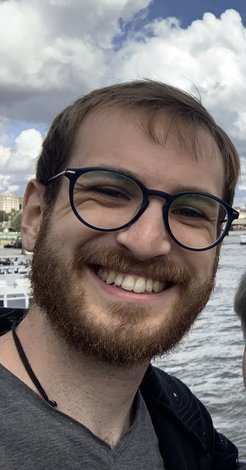
Dominik Ostertag (Germany)
ostertag @ mpia.de
Global models of gas and dust to study the dust drag instabilities in outer regions of protoplanetary disks
Observations of possible planet hosting stars in the past years have shown that many stars indeed are accompanied by planets. In addition, observations by the Atacama Large Millimetre array (ALMA) revealed that dust rings in the outer parts of the protoplanetary disks are rather a standard than an exception and provide reasonable amount of dust within a small radial region. However, how and why planets form in a protoplanetary disk and which role these dust rings play in the formation process is still a key question in todays research.
In order to start the formation of planetary embryos and eventually the formation of planets, the protoplanetary disk must allow dusty material to clump and attract additional material. To understand how planets form it is necessary to understand the processes that lead to this clumping of dust. A promising candidate for this process is the so called 'streaming instability' that requires a dust to gas ratio of order one such that the gas motion is significantly influenced by the dust due to the coupling between both. Due to the settling of dust within the protoplanetary disk we expect this condition to appear in the disks midplane. Once the clumps have formed due to the instability, the disk needs to provide enough material that can be collected by these clumps. Naturally formed dust rings might serve as the perfect reservoir for such dusty material. Hence, studying the effect of streaming instability in the vicinity of an existing dust ring provides an exiting research topic to study planet formation.
Within this project, we aim to perform global hydrodynamic simulations of gas and dust within the outer parts of a protoplanetary disk. The simulation of the streaming instability requires a high resolution to be observable which, on the other hand, slows down the simulation itself. Therefore we are interested in a grid with high resolution in the midplane and close to the dust ring while having a lower resolution in the rest of the grid. Once the desired grid is built up we will include a dust ring into the disk and activate the dust backreaction onto the gas.
We expect to observe the formation of dusty clumps as well as to be able to constrain the formation rate of planets. In addition it would be interesting to also study the accretion rate of the young planetary embryos.
This project will give us a great opportunity to study the streaming instability in more detail and how it contributes to the answer of a fundamental question - How do planets form?
Supervisor: Mario Flock (MPIA)
